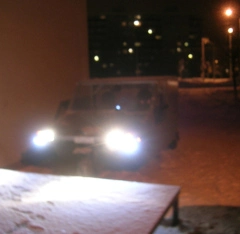

Relays: my use for truck relays is switching on heaters in my thermal storage water tank. Not big ones, though - I use relays rated for 24V and 40A of current. Since they are old, I have applied a safety margin and only let 25 A flow through them, so each of them handles 24 x 25 = 600 W.
As for using DC appliances: benefits do exist. If a household has a low voltage DC battery bank (some do, some don’t) then dropping the battery voltage a few times to power car parts comes with a smaller efficiency loss. In my household, DC appliances are used for lighting, communications, computing, cooling food, pumping water and soldering electronics. The rest goes via AC. I think a car air conditioner could cool some small storage room decently. With big living rooms, it would have difficulty since it’s a small device.



Looking at the beatiful show, I cannot avoid thinking: “each of them a potential weapon”.
So in fair weather, when communication is smooth and all navigation systems are working, it’s entirely feasible to coordinate a swarm of 10 000. Wow. :)
Soon enough, they will be coordinating each other in the presence of electronic warfare, and swarms of 100+ fly already, so 1000 is the next step. Anyone doing air defense is probably designing energy weapons (lasers, masers, etc) at a pace approaching madness, besides making ever-cheaper drones.
As for the environmental footprint - if each drone withstands 10 performances, they will probably save resources. :)